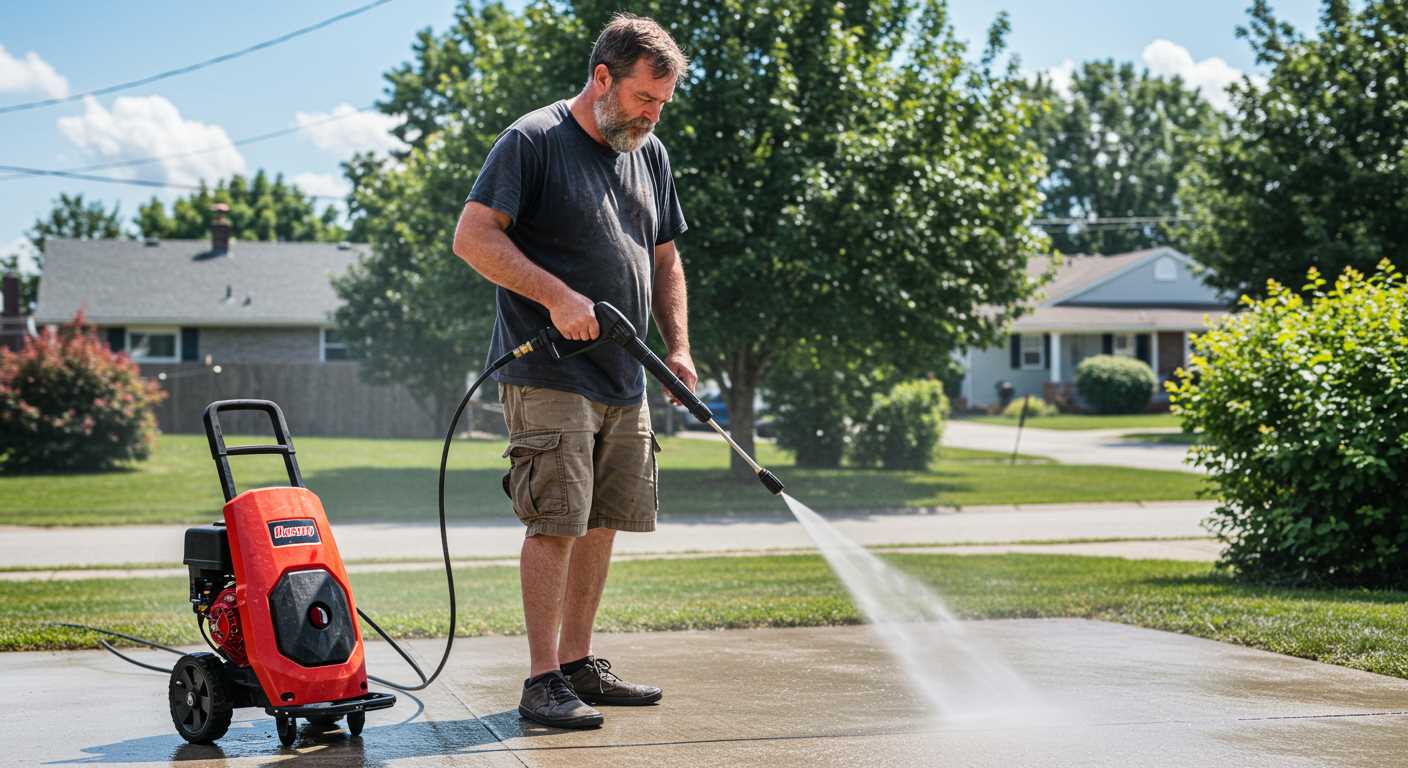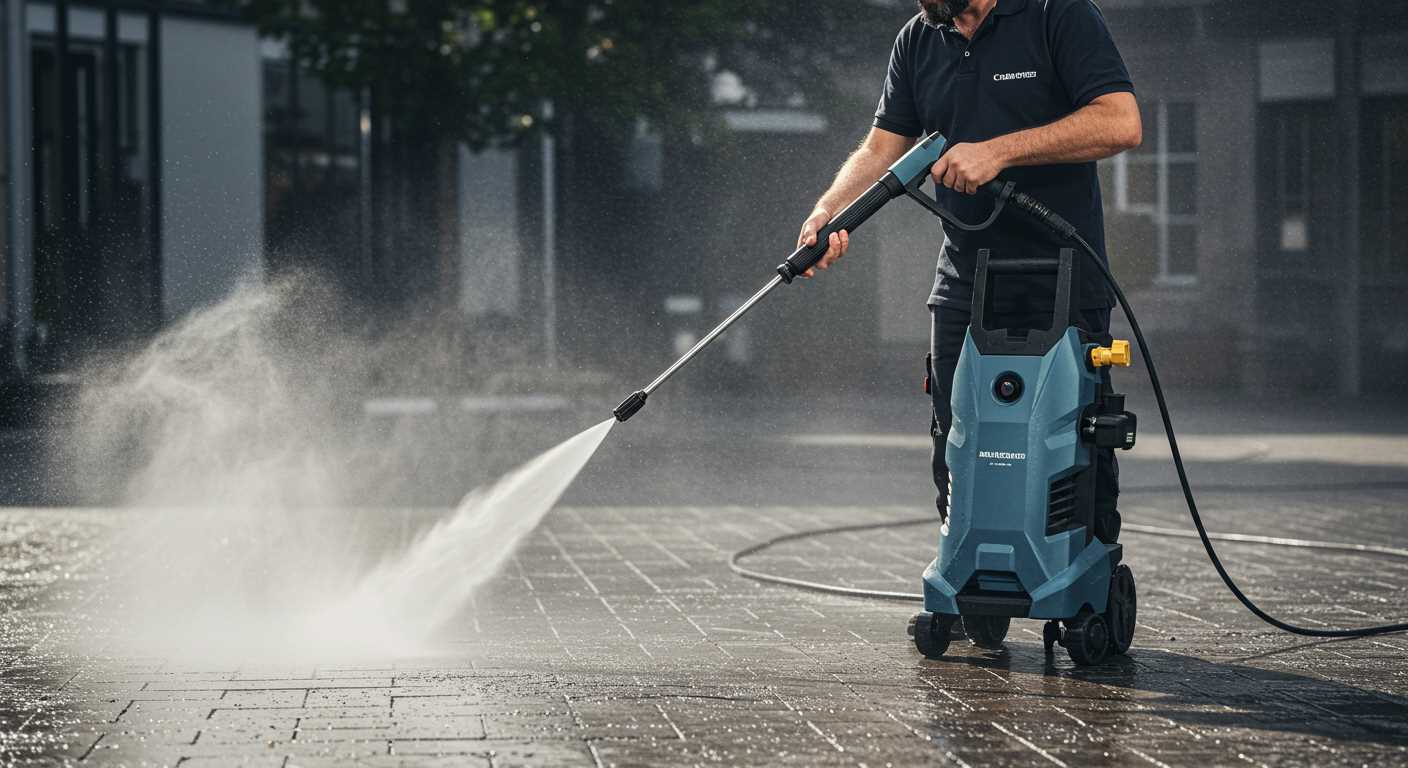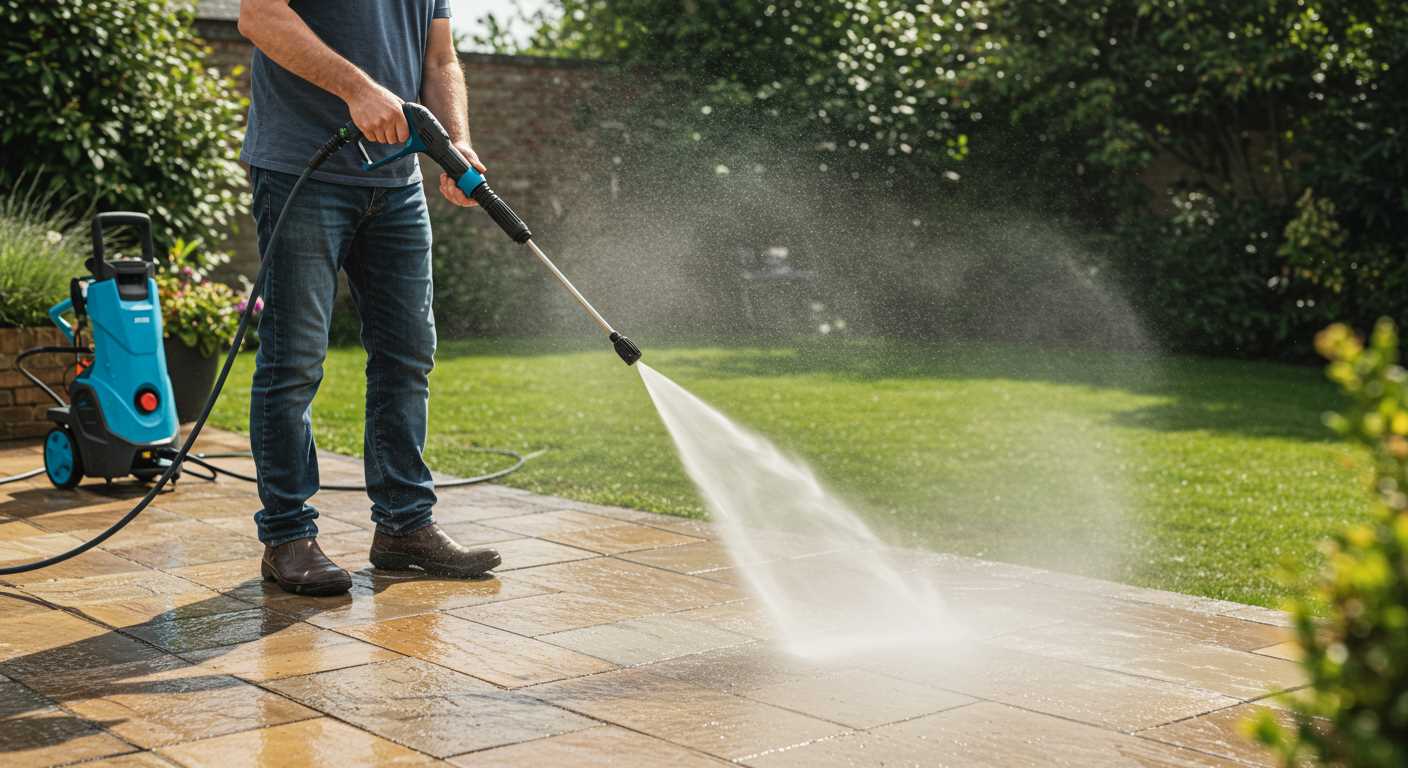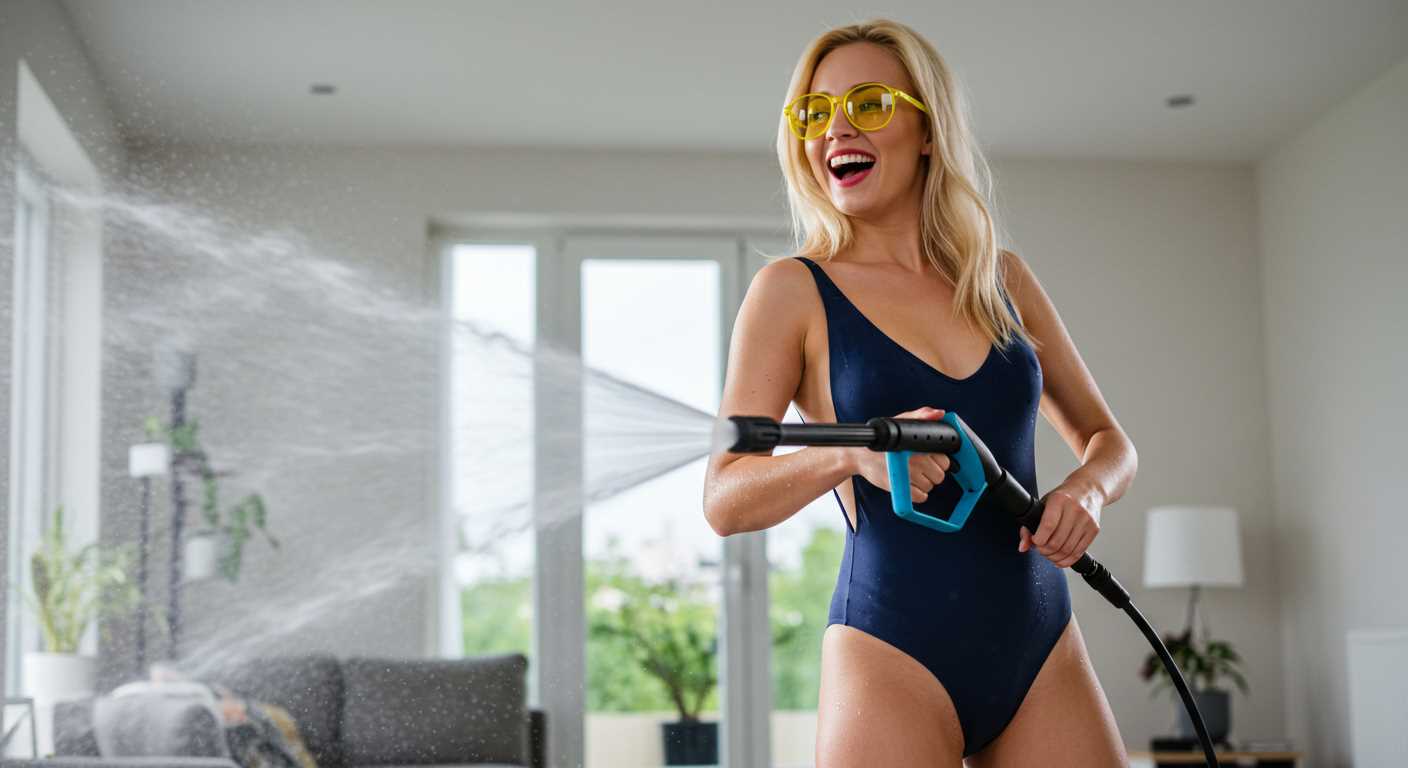




Keeping a high-pressure cleaning unit in an outdoor environment is not advisable. Exposure to elements such as rain, snow, and extreme temperatures can lead to significant damage, affecting performance and longevity. Protecting this equipment from the weather ensures it remains functional and reliable for your cleaning tasks.
From my years working with various models, I learned that even small amounts of moisture can lead to rust on internal components, while freezing temperatures can cause water left in the system to expand, potentially cracking hoses or the pump itself. Always ensure the machine is stored in a dry, temperature-controlled area, ideally indoors, to extend its lifespan and maintain efficiency.
If indoor storage isn’t an option, consider investing in a weather-resistant cover specifically designed for cleaning devices. These covers can provide a layer of protection against rain and UV rays, although they do not replace the necessity of a sheltered environment. Regular maintenance checks are crucial, even for units stored outdoors, to prevent any damage from occurring unnoticed.
Storing a High-Pressure Cleaner in the Elements
Leaving a high-pressure cleaner exposed to the elements is not advisable. Rain, snow, and fluctuating temperatures can lead to significant damage. I’ve seen machines corrode and components fail due to moisture and freezing conditions. Keeping it in a sheltered area can prevent these issues.
Make sure to drain any water from the system before putting it away. Residual water can freeze and cause cracks in the pump. In my experience, even a small amount of leftover liquid can lead to costly repairs. Using a pump protector is a good practice; it adds a layer of protection against freezing.
If you must leave it outdoors temporarily, consider using a heavy-duty cover. It shields against rain and UV rays, which can deteriorate plastic parts. I’ve used covers that fit snugly and are well-ventilated to prevent moisture build-up. This small investment can prolong the lifespan of your equipment considerably.
Regular maintenance is key. Before the season starts, check hoses and connections for signs of wear. I’ve had instances where neglecting these checks led to leaks and poor performance. Keeping everything in good shape ensures reliability when you need it most.
Lastly, if you have the option, bringing the unit indoors during extreme weather is best. It may seem like a hassle, but it can save you headaches down the line. I always recommend creating a dedicated storage space for this equipment, making it easy to maintain and protect.
Understanding the Risks of Outdoor Storage

Leaving cleaning equipment exposed to the elements is a gamble. Rain, snow, and UV rays can wreak havoc on components, leading to rust, corrosion, and breakdowns. I recall a colleague who left his unit outdoors year-round. The motor eventually failed, costing him more in repairs than it would have to invest in a proper shelter. Protecting your equipment is paramount.
Environmental Hazards
Moisture is the primary enemy. If water seeps into the engine or electrical parts, it can create short circuits or promote rust. Additionally, exposure to direct sunlight can cause plastic components to degrade, making them brittle and prone to cracking. I’ve seen units left in the sun for too long develop discolouration and loss of structural integrity.
Security Concerns
Leaving valuable tools unattended outside invites theft. I once heard about a neighbour whose equipment was stolen right from their yard. Investing in a secure storage option, like a locked shed or garage, not only protects your items from the weather but also deters potential thieves. It’s a simple step to extend the lifespan of your equipment and keep it safe.
Temperature Effects on Pressure Washer Components
Extreme temperatures can significantly impact components of cleaning devices, potentially leading to damage and reduced lifespan. High heat can cause seals and hoses to degrade faster, while freezing conditions can lead to internal damage.
- Hoses: Exposure to direct sunlight can weaken rubber or plastic hoses, causing them to crack over time. It’s advisable to check for any signs of wear before use.
- Seals and O-rings: High temperatures can cause these components to harden and lose elasticity. Regular inspection and replacement during seasonal changes can prevent leaks.
- Motors: Overheating may occur if the machine is stored in direct sunlight or in poorly ventilated areas. Ensure airflow around the motor when not in use.
- Water Pump: Freezing temperatures pose a risk of internal damage if water is left in the pump. Always drain the system thoroughly after use to avoid ice formation.
In my experience, I’ve seen units that were left in harsh conditions develop cracks in their components, leading to costly repairs. For instance, I once encountered a model where the water pump failed entirely due to freezing, resulting in a hefty bill for the owner. A quick maintenance routine before and after storage can save a lot of trouble down the line.
It’s also wise to consider additional protections, such as covers or insulated storage options, to shield your equipment from temperature extremes. Just like how some pet owners wonder can dogs climb chain link fences, you should be asking how you can keep your valuable equipment safe from the elements.
Weatherproofing Your Pressure Washer for Outdoor Use
Investing in protective covers is a straightforward way to shield your cleaning equipment from harsh elements. A high-quality, waterproof cover fits snugly over the unit, preventing moisture accumulation and UV damage. Ensure the cover is breathable to avoid trapping humidity inside, which can lead to rusting and mildew. I’ve seen too many machines suffer due to inadequate protection; a simple cover could save hundreds in repairs.
Proper Winterisation Techniques
During colder months, antifreeze solutions can be a lifesaver. Before the first frost, run a mixture of non-toxic antifreeze through the system. This practice protects the internal components from freezing and cracking. I once neglected this step, and it cost me dearly in repairs. Trust me, a few minutes of preparation can avoid a headache later on.
Regular Maintenance Checks
Conducting routine inspections is vital for maintaining functionality when equipment is stored outdoors. Check hoses for cracks, look for signs of corrosion on metal parts, and ensure all seals are intact. I always recommend a monthly check-up; I found that consistent attention prevents small issues from escalating into major problems. Keeping everything in working order not only extends the lifespan but also ensures optimal performance when needed.
Choosing the Right Location for Outdoor Storage
Select a shaded area to minimise direct sunlight exposure. Prolonged UV exposure can cause degradation of components, leading to costly repairs. I recall a client who left their unit in full sun; after a few months, the plastic casing became brittle and cracked.
Ensure the chosen spot is elevated to prevent water accumulation during rain. A slight slope or a platform can do wonders. I’ve seen too many units left on the ground, resulting in water damage and rust on metal parts.
Accessibility matters. Position the unit near a power source and water supply to simplify maintenance. I once worked with a homeowner who stored theirs at the back of the garden, making it a hassle to retrieve for regular use. Convenience can drive more frequent use, ensuring it remains in good condition.
Proximity to other equipment is another consideration. Avoid tight spaces that can trap moisture. I’ve seen mildew develop in cramped areas where airflow was restricted. Allow for some breathing space around the unit.
Consider potential environmental risks such as falling branches or debris. A corner of the yard may seem ideal until a storm brings down a tree limb. I’ve learned the hard way to avoid certain spots after witnessing damage to equipment left unprotected.
Lastly, think about security. If the area isn’t visible from your home, consider a lockable storage solution. I had a friend lose their unit to theft because it was stored in an out-of-sight location. A simple shed can provide both protection and peace of mind.
Maintenance Tips for Pressure Washers Stored Outside
Regular upkeep is paramount for longevity. If your cleaning device resides in an outdoor environment, implement these strategies to ensure optimal performance.
Protective Measures
- Cover the unit with a high-quality, waterproof cover to shield against rain and UV rays.
- Use a fuel stabiliser in the tank to prevent fuel degradation, especially during off-peak seasons.
- Drain the water from the system to avoid freezing and internal corrosion during colder months.
Routine Inspections
- Conduct visual checks for cracks or damage on hoses and fittings.
- Inspect electrical connections for signs of wear or corrosion, ensuring they remain dry and protected.
- Examine the pump oil level regularly, topping it up as needed to maintain optimal lubrication.
Following these guidelines not only preserves functionality but also enhances the lifespan of your equipment. Consistent attention to detail can prevent costly repairs down the line.
Using Covers and Tarps for Protection
Investing in a quality cover or tarp can significantly enhance the longevity of your cleaning equipment when stored in an outdoor environment. I recall a time when I overlooked this aspect; a simple tarp could have saved my unit from the elements. A durable, waterproof cover specifically designed for high-pressure cleaning devices acts as a barrier against rain, snow, and UV rays. Look for covers with breathable materials to prevent moisture buildup that can lead to rust.
Choosing the Right Material
Opt for heavy-duty fabrics like polyester or vinyl which resist tearing and fading. I’ve experimented with various options, and those with reinforced seams held up best against harsh weather. Additionally, consider covers with adjustable straps or elastic hems; these features ensure a snug fit and prevent the cover from blowing away in strong winds.
Maintenance of Covers and Tarps
Regularly inspect your protective covers for signs of wear and tear. I learned the hard way that even small rips can lead to significant damage over time. Clean the covers periodically to remove dirt and debris, which can deteriorate the fabric. Store them properly when not in use, as folding them neatly prevents creases and prolongs their lifespan. With the right protection, your equipment will be safeguarded against the unpredictable nature of outdoor conditions.
Signs Your Pressure Washer Has Been Damaged by Outdoor Storage
Rust and corrosion are immediate red flags when inspecting your cleaning machine after a period of external exposure. If you notice any reddish-brown spots on the metal components or a powdery residue on the surface, this indicates moisture damage. Inspect the pump as well; if it feels cold to the touch and has visible signs of rust, the internal components may have been compromised.
Leakage Issues
A leaking unit often points towards damage from prolonged exposure to the elements. If you find puddles beneath the equipment or notice fluid leaking from hoses, it might indicate cracks or degradation caused by freezing temperatures or UV rays. Check for any signs of degradation in the O-rings or seals, which can lead to significant performance issues.
Electrical Malfunctions
Corroded connections or frayed wires are symptoms of outdoor damage. If the motor fails to start or runs erratically, it could be due to water infiltration or exposure to moisture. Inspect all electrical components carefully for signs of corrosion or short circuits.
| Sign | Description |
|---|---|
| Rust and Corrosion | Visible spots or powdery residue on metal parts. |
| Leakage | Puddles underneath and fluid leaking from hoses. |
| Electrical Malfunctions | Failure to start or erratic motor behaviour. |
Listening for unusual noises can also indicate trouble. Grinding or squeaking sounds might suggest that bearings or other internal parts have been damaged. If you detect any of these issues, it’s critical to assess the extent of the damage and consider professional repairs.
Alternatives to Outdoor Storage for Your Pressure Washer
Storing your cleaning equipment indoors is the most reliable option. A garage or shed provides a controlled environment, safeguarding against moisture, temperature fluctuations, and dust. If space is limited, consider a dedicated corner in a utility room or basement, ensuring it’s away from direct sunlight and heat sources.
Utilising Indoor Racks and Shelving
Investing in wall-mounted racks or shelving units can maximise space efficiency. These devices keep your unit off the ground, reducing the risk of accidental damage. I once set up a simple shelf in my garage, allowing me to store my quiet pressure washer above ground level, freeing up floor space for other tools and equipment. This method also makes it easier to access the equipment when needed.
Portable Storage Solutions
If you prefer flexibility, consider mobile storage options like toolboxes or trolleys. A sturdy, wheeled cart can hold your cleaning equipment and accessories, making it simple to transport between locations. I’ve used such carts for years, and they’ve proven invaluable for keeping everything organised and easily accessible. Just ensure the cart has weather-resistant features if it’s occasionally exposed to the elements.
For those who operate in various locations, a storage container or trailer can be an effective choice. It allows you to keep everything secure and offers protection from the elements, making it ideal for professionals who move frequently.
Taking care of your equipment by choosing the right storage solution is crucial. Keeping it protected ensures longevity and performance, so explore these alternatives to enhance your cleaning routine.
FAQ:
Can I leave my pressure washer outside in winter?
Leaving a pressure washer outside in winter is not advisable. Cold temperatures can cause water left in the machine to freeze, potentially damaging the pump and other components. If you must store it outside, ensure it is completely drained of water and protected from the elements with a proper cover. However, the best option is to store it in a dry, sheltered location, such as a garage or shed, where it is less exposed to harsh weather.
What precautions should I take if I store my pressure washer outside?
If you need to store your pressure washer outside, there are several precautions to follow. First, ensure that it is drained of all water to prevent freezing. Use a waterproof cover to protect it from rain and snow. It’s also wise to elevate it off the ground to avoid contact with moisture. Lastly, if possible, consider using a lock or security device to prevent theft.
What are the risks of storing a pressure washer outside?
Storing a pressure washer outside poses several risks. Exposure to the elements can lead to rust and corrosion, especially if it is not covered properly. Additionally, moisture can enter the machine, causing internal damage, particularly to the pump. There is also the risk of theft or vandalism if the pressure washer is left unsecured. To mitigate these risks, it is better to store the washer in a more protected environment.
How can I prepare my pressure washer for outdoor storage?
To prepare your pressure washer for outdoor storage, start by thoroughly cleaning it to remove any dirt or debris. Next, drain all water from the machine and hoses to prevent freezing or mildew. Apply a protective cover to shield it from rain and snow. If possible, place it on a platform or shelf to keep it off the ground. Additionally, consider using a stabiliser in the fuel if your model is gas-powered, and check the manufacturer’s instructions for any specific storage recommendations.








.jpg)


